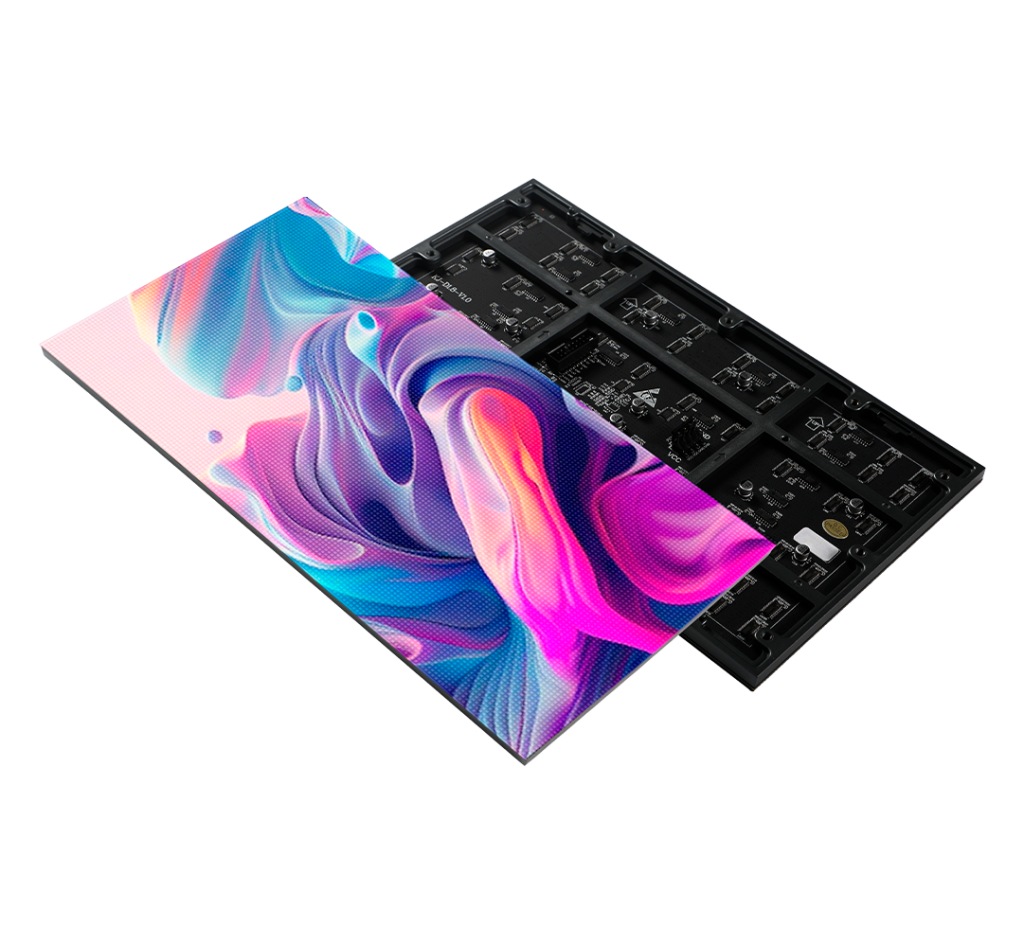The first consideration for LED screens is, of course, the allowable screen area of the user’s site, which not only considers the actual size of the site, but also the viewing angle and line of sight. So what are the factors that affect the area of LED screens?
(1) The relationship between the effective line of sight of LED screens and the actual site size;
(2) The relationship between the pixel size, resolution, and actual production location of LED screens;
(3) Estimating the area size based on LED screen units;
(4) Mechanical installation and maintenance operation space for LED screen body;
(5) The influence of screen inclination angle on distance.
What are the playback effects that LED screen users need?
(1) Text display: Depending on its text size and resolution requirements;
(2) Normal video display: 320 x 240 dot matrix;
(3) Digital standard DVD display: ≥ 640 × 480 dot matrix;
(4) Complete computer video: ≥ 800 × 600 dot matrix;
3. What are the brightness requirements for the LED screen body for environmental brightness?
The general brightness requirements are as follows:
(1) Indoor LED display screen:>800CD/M2
(2) Half indoor LED display screen:>2000CD/M2
(3) Outdoor LED display screen (facing south and north):>4000CD/M2
(4) Outdoor LED display screen (facing north and south):>8000CD/M2
What are the brightness requirements for red, grön, and blue in terms of white composition?
Röd, grön, and blue contribute differently to the quality of white. The fundamental reason is that the retina of the human eye perceives different wavelengths of light differently. After extensive experimental verification, the following approximate proportions have been obtained for reference design: the simple red green blue brightness ratio is 3:6:1, and the precise red green blue brightness ratio is 3.0:5.9:1.1
Why do high-end full-color displays use pure green tubes?
In the actual production of LED screens, three primary color LED tubes with high luminous efficiency and the ability to obtain rich and vivid color rendering should be selected, so that the area of the color triangle in the chromaticity chart is as close as possible to the tongue shaped spectral color curve, to meet the requirements of rich color and sufficient brightness. The tip of the tongue shaped curve is 515nm wavelength light. Därför, high-end LED screens choose pure green color LED tubes with wavelengths close to 515nm, such as LED tubes with wavelengths of 520nm, 525nm, or 530nm.
Why do LED screens choose the DVI display interface standard?
(1) The DVI display card interface is a display interface that complies with international computer standards;
(2) Easy installation without opening the chassis;
(3) High graphics memory and strong dynamic image display capability;
(4) Strong software and hardware compatibility;
(5) Supports all operating systems and application software, with flexible and convenient display;
(6) Mass production, low cost, and easy maintenance.



